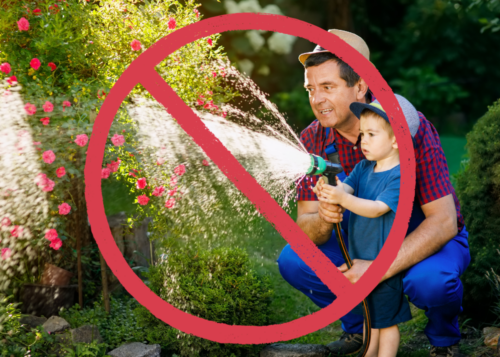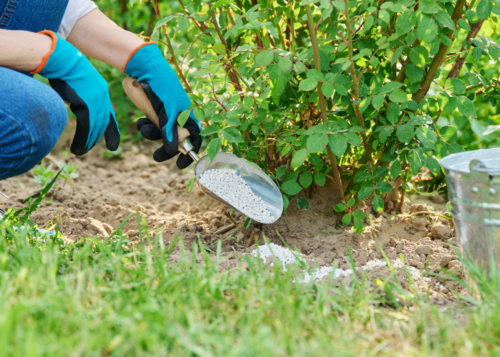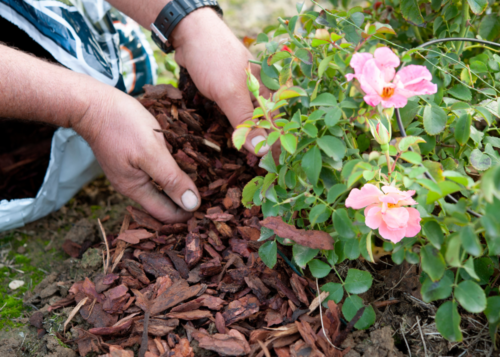With the promise of cooler temperatures in fall, many of our roses are ready to offer another flush of blooms. Let’s take a look at a few things you can do to help them make a vibrant statement in your landscape.


In order to really push out some blooms, your roses need to be putting out plenty of good foliage to produce carbohydrates. It’s important to keep the foliage you have free of disease. If you have found that your roses have been plagued by black spot or powdery mildew through the spring or summer season, you most likely need to do some preventative spraying to keep these diseases at bay during fall.
Another way to decrease the chances of fungal disease and defoliation is to make sure you are avoiding wetting the foliage when you water. Focus on the soil area around the base of the plant, extending out to the dripline. Stop watering with overhead sprinklers if you have been using them, and maybe even look into drip irrigation in the future. It’s a true help for preventing disease and as a bonus, you also get to water through summers when water restrictions are in place.


Fertilization at this time of year (September) is important to get those rose blooms going. If you are using a synthetic formula of fertilizer, apply about a ¼ cup per shrub. A 3-1-2 ration on the fertilizer bag is a good choice. If organic fertilizer is your thing, applying ¾ cup per shrub is ideal. We like Maestro Gro Rose Glo, or Espoma Rose-Tone.
This fertilizer should be scratched into the soil in a about a 5′ diameter around the entire plant. Follow up with a liquid soluble fertilizer about two weeks after feeding with the granular fertilizer. After that, you shouldn’t need to feed again until spring. Always water fertilizer in after applying it. Take note that roses that only bloom once through the year do not need to be fertilized until spring.


Keep competitive weeds down by applying 2-3″ of mulch. Leave some space open right around the base of your roses. We like Gardenville Living Mulch which is a blend of compost and native mulch, that slowly breaks down and actually feeds and improves your soil with time. Mulch will also be beneficial in helping to regulate the temperature of soil around the roots of your roses through winter.
Hard pruning should be avoided now. Hopefully you lightly sheared your repeat blooming roses at the end of August or the first weeks of September.
September is also a good time to plant roses, just as it is the best time to plant other shrubs, trees, and perennials. The problem will be inventory. We get most of our rose selection in January and sell the majority in spring. However, small shipments come in throughout the fall too (Bandera just brought in some gorgeous blooming roses this past Wednesday. 9/20/23). Come often to see what we’ve got.
Give your roses a little TLC at the start of fall and get ready to sit back and enjoy the show!
~The Happy Gardener, Lisa Mulroy


Should this info on roses and prune time should have been posted in mid August ?I guess it’s to late to hard prune.I was going to do mine this weekend
Hi Jean,
We always have a lot of information on our website about plant care, if you search rose or roses on our site, there are plenty of options to help. We posted a blog back on August 10th, that had this advice about pruning back roses. Do you get our newsletter? I’d encourage you to sign up for those timely tips. That being said, with the weather still being hot, gardening tasks are pushed back a little and you can probably get away with pruning some this weekend. Thanks for commenting!